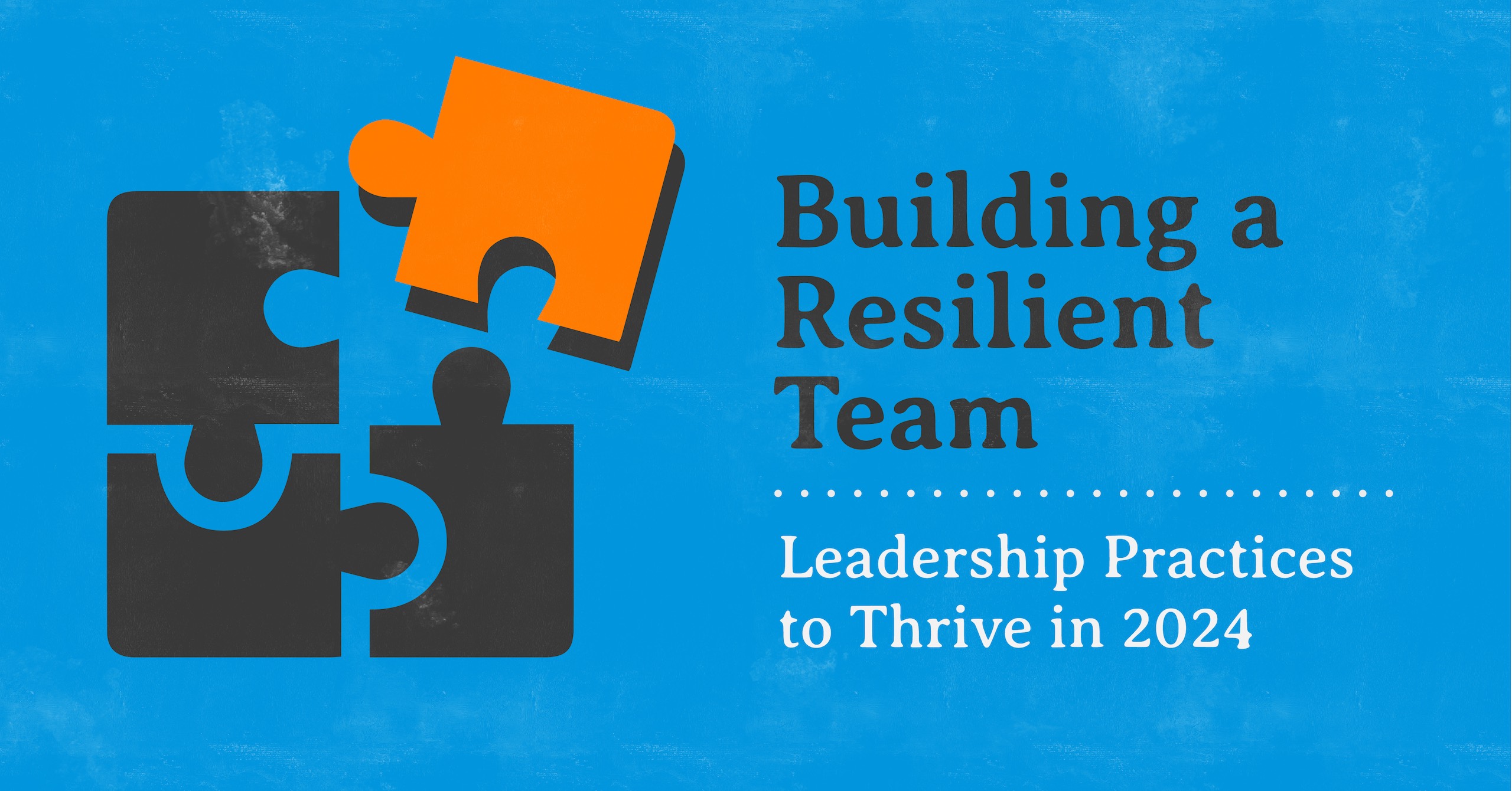In the dynamic landscape of the modern workplace, resilience has become a critical attribute for teams to navigate the ever-evolving challenges they face. As we start 2024, the need for resilient teams has never been more apparent. The ability to adapt, overcome adversity and maintain high performance in the face of uncertainty is what sets successful teams apart. Let’s explore the concept of resilience in the workplace and dive into practical leadership practices that can help build and sustain a resilient team.
Understanding Resilience in the Workplace:
Resilience goes beyond merely bouncing back from setbacks; it involves the capacity to grow and thrive in the face of adversity. In a professional context, resilient teams are those that can weather storms, learn from setbacks and emerge stronger and more capable. As a leader, understanding the dynamics of resilience is crucial to fostering a team that can not only survive but also thrive in challenging environments.
Emotional Intelligence as the Foundation:
At the core of building a resilient team lies the leader’s ability to cultivate emotional intelligence within the team. Leaders with high emotional intelligence can empathize with team members, understand their emotions and effectively manage their own emotions. This skill set is fundamental to creating a positive and supportive work environment where team members feel understood and valued.
Encourage open communication, active listening and regular check-ins to gauge the emotional well-being of your team. Recognize that acknowledging and addressing emotions is not a sign of weakness but a crucial aspect of building resilience. By fostering emotional intelligence, leaders lay the groundwork for a team that can collaborate effectively, even in the face of adversity.
Fostering a Supportive Work Culture:
A resilient team thrives in an environment where trust and collaboration flourish. Leaders must actively work towards creating a supportive work culture where team members feel safe to express their ideas, voice concerns and take calculated risks. Encourage a culture of learning and celebrate both successes and failures as opportunities for growth.
Building resilience is also about creating a sense of belonging. When team members feel connected and supported, they are more likely to navigate challenges together. Foster a sense of community through team-building activities, shared goals and a collective vision that everyone can rally behind.
Strategies for Coping with Challenges:
In the fast-paced and unpredictable world of 2024, challenges are inevitable. A resilient team is equipped with strategies to cope with and overcome these challenges. Provide your team with the tools and resources they need to adapt to change, whether it’s through ongoing training, access to the latest technologies or mentorship programs.
Encourage a growth mindset within your team, emphasizing that challenges are opportunities for learning and improvement. Establish clear goals and priorities, allowing your team to stay focused on what truly matters even amidst chaos. Promote a healthy work-life balance to prevent burnout and ensure your team remains energized and ready to tackle challenges head-on.
Building a resilient team requires intentional leadership practices that prioritize emotional intelligence, foster a supportive work culture, and implement effective coping strategies for challenges. As we navigate the uncertainties of 2024, leaders must recognize that resilience is not just a desirable trait but a necessary one for teams to thrive in the face of change. By investing in the well-being and growth of their teams, leaders can ensure that their organizations not only survive but emerge stronger and more resilient in the years to come.
For more leadership insights- check out my new podcast- Balance, Not Burnout available anywhere you listen to podcasts.

